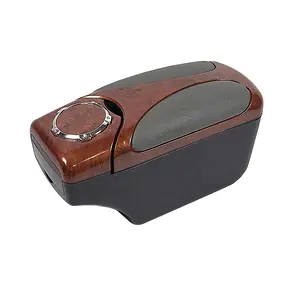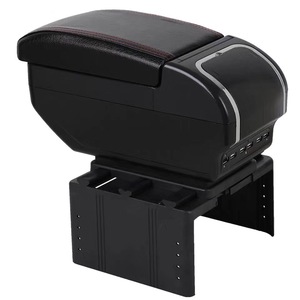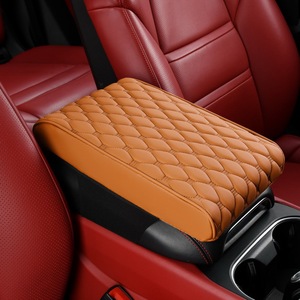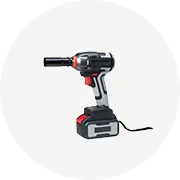Types of Car Armrests
An armrest for a car is a padded component designed to provide comfort to drivers and passengers during journeys. Beyond comfort, modern car armrests often serve multiple purposes including storage, housing electronic controls, and enhancing the vehicle's interior aesthetic.
Comfort Tip: A properly positioned armrest reduces driver fatigue on long journeys by supporting the elbow and forearm, allowing for more relaxed steering control.
Front Armrest (Center Console)
Located between the front seats, this multifunctional component serves as both a comfort feature and storage solution.
Key Features:
- Padded top surface for arm support
- Storage compartment access via hinged lid
- Cup holders for beverages
- USB/power ports in modern vehicles
- Sometimes includes rear air vents
- Document and small item storage
- May feature height adjustment
Rear Armrest (Rear Center Console)
Positioned in the middle of the rear seat to enhance passenger comfort during travel.
Key Features:
- Folds down from seatback when needed
- Padded surface for arm support
- Often includes cup holders
- Some models offer storage compartments
- May include pass-through to trunk
- Sometimes features charging ports
- Can include climate controls in luxury models
| Armrest Type | Primary Location | Main Functions | Common Features |
|---|---|---|---|
| Front Armrest | Between front seats | Driver/passenger comfort, storage | Storage compartment, cup holders, charging ports |
| Rear Armrest | Middle of rear seat | Passenger comfort | Cup holders, sometimes storage, fold-down design |
| Door Armrest | Interior door panels | Arm support, housing controls | Window controls, door locks, sometimes storage |
Specifications and Maintenance of Car Armrests
Specifications
Car armrests are designed with various specifications to enhance comfort, functionality, and aesthetic appeal. Understanding these specifications helps in selecting the right armrest for your vehicle.
| Specification | Details | Importance |
|---|---|---|
| Size and Dimensions | Width: 8-12 inches Length: 10-15 inches |
Determines fit and comfort level |
| Material | Leather, vinyl, fabric, wood | Affects durability, maintenance, and aesthetics |
| Padding Type | Memory foam, high-density foam | Impacts comfort and support level |
| Storage Capacity | Simple box to multi-compartment systems | Determines practicality and organization options |
| Mounting Method | Surface-mounted, internally mounted | Affects installation complexity and stability |
| Adjustability | Height, angle, extension options | Enables customization for different users |
| Ergonomics | Contoured design, strategic positioning | Reduces fatigue and enhances comfort |
Maintenance
Proper maintenance extends the life of your car armrest while preserving its appearance and functionality:
Regular Cleaning
Material-specific cleaning prevents buildup of dirt and maintains appearance:
- Leather: Use leather cleaner and conditioner
- Fabric: Spot clean or use upholstery cleaner
- Vinyl: Mild soap solution and soft cloth
- Wood: Specialized wood cleaner or polish
Frequency: Bi-weekly for high-use vehicles
Preventative Care
Proactive measures to prevent damage and extend lifespan:
- Regular inspection for wear and tear
- Avoid placing heavy items on armrests
- Use of fabric/leather protectants
- Lubrication of hinges and moving parts
- Immediate repair of small damages
Frequency: Monthly inspection recommended
Maintenance Tip: For leather armrests, apply a quality leather conditioner every 3 months to prevent cracking and maintain suppleness, especially in regions with extreme temperature variations.
How to Choose an Armrest for Your Car
Selecting the ideal armrest for your vehicle requires consideration of multiple factors to ensure compatibility, comfort, and functionality.
| Selection Factor | Considerations | Why It Matters |
|---|---|---|
| Vehicle Compatibility | Car model, make, year, existing mounting points | Ensures proper fit and installation capability |
| Style and Design | Color matching, texture, profile, aesthetic integration | Maintains interior cohesion and enhances appearance |
| Comfort Features | Padding type, height, width, ergonomic design | Directly impacts user comfort on short and long journeys |
| Installation Complexity | DIY feasibility, tools required, time investment | Determines whether professional installation is needed |
| Additional Functionalities | Storage options, cup holders, charging ports | Adds practical value beyond basic comfort |
| Budget Considerations | Price range, value for features, long-term durability | Ensures investment aligns with expectations and needs |
Selection Tip: Before purchasing, measure your car's interior space carefully. An armrest that's too large can obstruct gear shifts or handbrakes, while one that's too small may not provide adequate support.
Vehicle-Specific Considerations
Different vehicle types have unique armrest requirements:
Sedans and Coupes
Typically benefit from:
- Streamlined design that preserves cabin space
- Height-adjustable front armrests
- Integrated storage solutions
- Fold-down rear armrests with cup holders
SUVs and Crossovers
Often require:
- Larger, more robust armrest construction
- Extended storage capacity for longer journeys
- Multi-functional consoles with device integration
- Durable materials that withstand family use
Trucks and Commercial Vehicles
Typically need:
- Heavy-duty construction to withstand work use
- Practical storage for documents and tools
- Water-resistant and easy-clean materials
- Sometimes fold-up design for middle passengers
How to DIY and Replace Armrest for Car
Replacing a car armrest is a manageable DIY project that can refresh your vehicle's interior and improve comfort. Follow these comprehensive steps for a successful installation.
Required Tools
Essential Tools
- Socket wrench set
- Screwdriver set (Phillips and flathead)
- New armrest replacement
- Trim removal tool set
Recommended Additional Tools
- Work gloves
- Small flashlight or headlamp
- Masking tape (to prevent scratches)
- Small container for screws and fasteners
Step-by-Step Replacement Process
-
Prepare Your Workspace
Park your vehicle in a well-lit area with sufficient space to work. Gather all necessary tools and materials beforehand. Place a clean towel on the car seat to protect it from scratches and to catch any small parts that may fall.
-
Remove the Old Armrest
Locate all fastening points (typically screws, bolts, or clips). Use the appropriate tools to carefully remove fasteners, keeping them organized for reinstallation. For clip-attached armrests, use trim removal tools to gently pry around the edges without damaging surrounding trim.
Caution: Always pull gently when removing clips to avoid breaking them. If you encounter significant resistance, check for hidden screws or fasteners.
-
Prepare the New Armrest
Unpack and inspect the new armrest for any manufacturing defects. If your original armrest had any transferable components (electronic modules, cup holder inserts, etc.), carefully remove them from the old unit and transfer them to the new one following manufacturer guidelines.
-
Install the New Armrest
Position the new armrest in the proper location, aligning all mounting points. Secure it using the original fasteners or new ones provided with the replacement. Ensure all connections are tight but avoid over-tightening which can strip threads or crack plastic components.
-
Test Functionality
Before considering the job complete, thoroughly test all features of the new armrest. Verify that storage compartments open and close properly, cup holders function as intended, and any electronic features work correctly. Make adjustments as needed.
Installation Tip: Take photos at each step of the disassembly process with your smartphone. These visual references will prove invaluable when reassembling, especially if the installation involves multiple components or complex mounting systems.
Frequently Asked Questions
No, car armrests are not universal. They vary significantly in size, shape, mounting mechanisms, and features according to vehicle make, model, and year. While some aftermarket armrests are designed with adjustable mounting brackets to fit multiple vehicles, most factory-replacement armrests are vehicle-specific to ensure proper fit and functionality.
When shopping for a replacement, always verify compatibility with your specific vehicle or consult with automotive specialists to find appropriate options. Universal armrests typically require more customization during installation.
Yes, you can install an armrest in a car without a center console using floor-mounted or seat-mounted aftermarket options. These specially designed armrests attach directly to the floor between the seats or mount to the seat frames themselves. The installation process typically involves:
- Identifying appropriate mounting points under the seats
- Securing brackets to the vehicle floor or seat frame
- Attaching the armrest assembly to the installed brackets
- Adjusting height and position for optimal comfort
Such installations can significantly enhance comfort without requiring major vehicle modifications, though they may not offer the extensive storage capabilities of factory center consoles.
The best material for a car armrest depends on your specific needs, usage patterns, and preferences:
| Material | Advantages | Disadvantages | Best For |
|---|---|---|---|
| Leather | Premium look and feel, durability, easy to clean | Higher cost, requires conditioning, can get hot in direct sunlight | Luxury vehicles, owners seeking premium aesthetics |
| Vinyl/Leatherette | Affordable, water-resistant, easy maintenance | Less breathable than leather, may crack over time | Family vehicles, budget-conscious buyers |
| Fabric | Comfortable in all temperatures, breathable | Stains easily, harder to clean thoroughly | Vehicles in extreme climates (hot or cold) |
| Memory Foam with Cover | Superior comfort, conforms to arm shape | May lose shape over time, typically more expensive | Long-distance drivers, those with arm or elbow discomfort |
For the best long-term satisfaction, choose a material that matches your interior, suits your climate conditions, and aligns with your maintenance willingness.
Minor armrest damage can often be repaired without full replacement using these approaches:
- For leather/vinyl tears: Use a leather/vinyl repair kit with color-matching compounds to fill and seal small tears or cracks
- For fabric tears: Apply fabric adhesive beneath the tear and press together, or use iron-on patches for larger damage
- For loose padding: Inject foam repair compound through a small opening to restore firmness
- For hinge issues: Disassemble, clean, lubricate, and reassemble the hinge mechanism
These repairs can extend your armrest's life by several years when done properly, though extensive damage may still ultimately require replacement.
























































































































































































































































 浙公网安备 33010002000092号
浙公网安备 33010002000092号 浙B2-20120091-4
浙B2-20120091-4